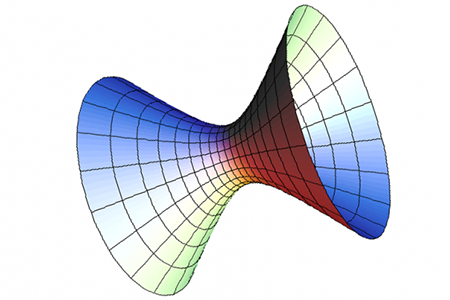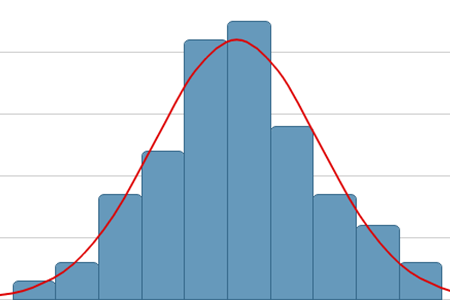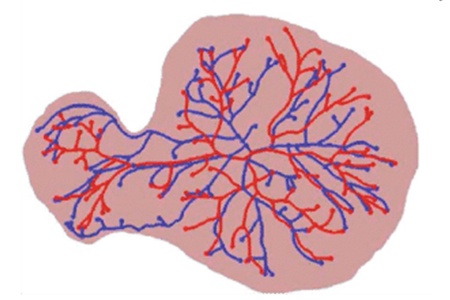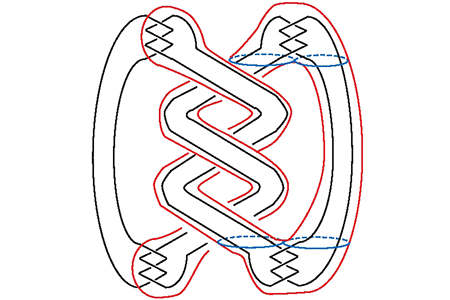Explore Mathematics and Statistics Degrees
VIDEO: Explore Math at CSU Long Beach
In the Mathematics and Statistics Department you will explore the logic and patterns of the natural world via rigorous quantitative analysis. Mathematics and statistics are responses to the fundamental human endeavor to understand the world. Modern technological society relies on developments in these disciplines.
Undergraduate Degree Programs
The Mathematics and Statistics Department offers 4 undergraduate degrees. Each program has distinct goals, but they overlap in a core curriculum that makes it easy to switch back and forth if your interests change.
B.S. Mathematics (Pure Math)

Pure Math requires a selection of fundamental courses in algebra, statistics, and analysis be taken. It is the most flexible program, in which the greatest number of electives may be chosen. Elective upper division mathematics courses are available which meet the needs of students preparing careers in industry and government, secondary teaching, and graduate study.
B.S. Mathematics, Applied Mathematics option

Applied Math emphasizes mathematics frequently used in applications. The student may choose one of two options: the first is aimed at applications in science and engineering, the second at applications in economics and management. Students are prepared for careers in industry, business, and government and for graduate study in applied mathematics.
B.S. Mathematics, Mathematics Education option

Math Education is for students preparing to teach mathematics at the secondary school level. Students receive the same rigorous mathematical training that they would with other options of the Math major, but with coursework oriented to highlight the theoretical foundation of high school mathematics. Students also complete the prerequisites of the Single Subject Credential Program, including topics such as math modeling, computer applications for teaching, math history, modern issues in secondary school mathematics, and observations in local schools.
B.S. Applied Statistics

Statistics provides a foundation in statistical methods. The courses required ensure that the student understands how the techniques are mathematically derived and how they are applied. Statistical analysis is an essential part of any scientific investigation and is a vital tool in monitoring the quality of products and services and in forecasting.
Learn more about the undergraduate degree programs in Mathematics and Statistics.
Graduate Degree Programs
The Mathematics and Statistics Department offers 4 graduate degrees.
M.S. Mathematics (Pure Math)
The Pure Math graduate program trains students in mathematical concepts independent of application outside mathematics.
M.S. Mathematics, Applied Mathematics option
The Applied Math graduate program trains students in applied math methods with strong emphasis on computational skills.
M.S. Mathematics, Mathematics Education for Secondary School Teachers option
The Math Education graduate program is designed for people holding a California Single Subject Teaching Credential in Mathematics and teaching in middle, junior high, high school, or community college. This option will give students greater expertise in mathematics and mathematics education (curriculum, teaching, learning, assessment, and research).
M.S. Applied Statistics
The Applied Statistics graduate program trains students to utilize statistical methods to draw valid and meaningful inferences from data.
Learn more about the graduate degree programs in Mathematics and Statistics.
Research
Our faculty are actively involved in cutting-edge research in applied math, math education, pure math, and statistics. We also engage in cross-disciplinary collaborations with our colleagues in physics, engineering, computer science, and more.
SPOTLIGHT: Pattern Recognition in Human Placenta
Dr. Jen-Mei Chang's lab is concerned with understanding of patterns in high-dimensional data sets geometrically, which translates into a myriad of theoretical, algorithmic, and computational analysis of massive data sets from a geometric perspective. One of the lab's current projects include developing new techniques of image processing and pattern recognition to study mathematical features of human placentas, which may help identify health risks of individuals later in life.

SPOTLIGHT: Knot Theory
Dr. Ryan Blair's lab investigates low-dimensional geometry and topology with an emphasis on knot theory. The world in which we live is three dimensional. This basic fact implies that we live in some 3-manifold, so the study of 3-manifolds illuminates the nature of the universe. The broad goal of the lab's research is to study 3-manifolds via knots, because knotting phenomena in manifolds is so rich that a complete understanding of it would lead to a complete understanding of all 3-manifolds.

Learn more about faculty research in Mathematics and Statistics.
Teaching Credentials
The Single Subject Teaching Credential is the license you need to teach at any public high school in California. The path to a credential starts with a B.S. in Mathematics, Option in Mathematics Education, which covers all the prerequisites of the credential program. With your bachelor's degree in hand, you'll start the Single Subject Credential Program (SSCP), which takes about 18 months of specialized training including student teaching. It is also possible to apply to the SSCP with other options of the math major, if you plan your coursework carefully to cover the prerequisites of the program.
Learn more about teaching credentials in Mathematics and Statistics.





